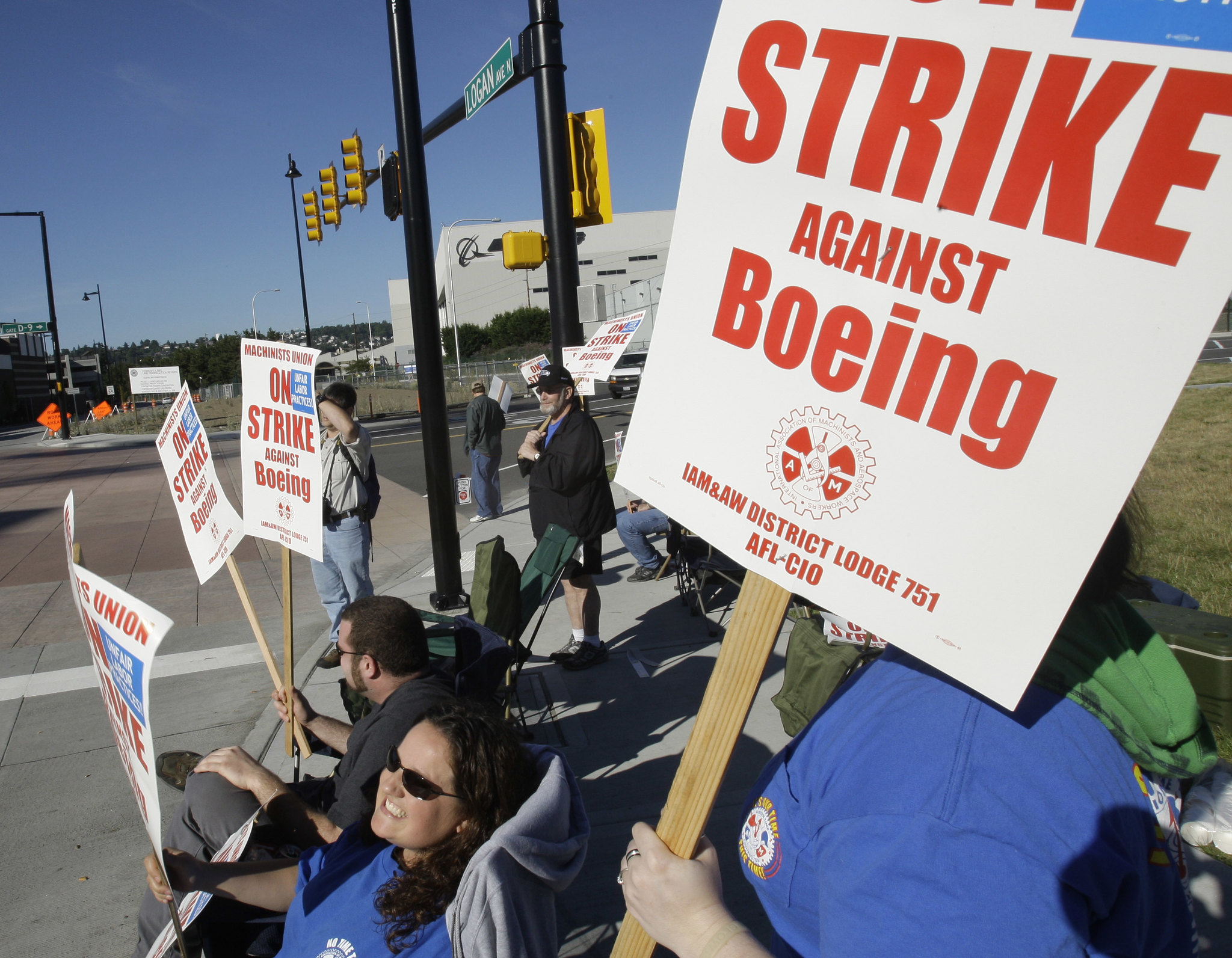Boeing, one of the world’s largest and most recognized aircraft manufacturers, is facing a rough patch in 2024. The company has reported a staggering $11.8 billion loss for the year, stemming from a series of events that have rocked its operations. Production disruptions, a worker strike, and lingering concerns over the safety of its 737 Max model have all contributed to this financial setback. But what does this mean for the company, the aviation industry, and the future of air travel?
The Weight of the $11.8 Billion Loss
Boeing’s $11.8 billion loss for 2024 is more than just a staggering financial number—it’s a wake-up call for the aviation giant. This loss has not only sent shockwaves through the aviation industry but also raised serious concerns about Boeing’s long-term viability and its ability to recover from the deep-rooted issues it faces. For a company of Boeing’s scale, such a loss is not simply a matter of unfortunate circumstances but an indication of profound operational problems that have been accumulating over time.
At its core, this massive financial setback underscores how Boeing’s operations have been marred by a series of missteps, including supply chain disruptions, workforce shortages, and unresolved safety concerns with key aircraft models like the 737 Max. These issues, when combined, have created a perfect storm that is severely damaging the company’s reputation and financial health. More than just the cost of materials or labor, these disruptions reveal a deeper structural problem within Boeing’s operations, suggesting that the company may have been operating at a loss in terms of efficiency and management for a longer period than it has publicly acknowledged.
Additionally, external pressures have added fuel to Boeing’s struggles. The global aviation industry has faced unprecedented challenges, from rising fuel costs to geopolitical instability and economic slowdowns. These factors have made it harder for Boeing to recover from the internal challenges it has been facing. Airlines, which are critical customers for Boeing, have also been affected by the same economic forces, leading to delays in aircraft orders or cancellations, further contributing to the company’s inability to meet its financial targets.
For Boeing, the $11.8 billion loss is not just a short-term setback but a critical moment for reflection. It highlights a need for urgent changes in strategy, operations, and leadership. The company must reassess its business model, address its internal inefficiencies, and respond to external market changes with agility and foresight. If Boeing hopes to survive this turbulent period, it will have to not only fix the issues it’s currently facing but also adapt to an aviation landscape that has changed dramatically in recent years.
Understanding the Production Disruptions
| Issue | Description | Impact on Boeing | Key Consequences | Strategic Response Needed |
| Delays in Aircraft Deliveries | Boeing has faced significant delays in delivering key aircraft models such as the 737 Max and 787 Dreamliner. The company struggled to meet deadlines for bulk orders placed by airlines. | These delays not only reduced Boeing’s revenue streams but also damaged its relationships with airline customers. | Lost revenue, damaged brand reputation, strained client relationships | Boeing needs to optimize its production timelines and improve communication with clients to manage expectations and restore trust. |
| Supply Chain Challenges | Boeing’s production was hindered by supply chain issues, including shortages of critical materials and components. These disruptions led to assembly line halts. | Shortages of materials like specialized metals, parts, and electronic components have delayed the manufacturing process. | Inability to fulfill orders, increased costs, delayed deliveries | Boeing must diversify its supplier base, establish stronger relationships with suppliers, and improve inventory management to prevent future delays. |
| Workforce Shortages | A reduction in production capacity, coupled with a shortage of skilled workers, further complicated Boeing’s manufacturing process. The company could not fully staff its production lines in 2024. | The lack of sufficient skilled labor led to delays in production and resulted in less efficient assembly processes. | Increased production costs, further delays, lower output | Boeing should focus on attracting skilled workers, provide training programs, and explore automation solutions to maintain production levels. |
The Impact of the Worker Strike
Boeing’s massive worker strike in 2024 came at a time when the company was already grappling with significant production disruptions. This strike not only intensified Boeing’s operational struggles but also led to a series of financial and strategic challenges.
- Labor Disputes: The strike involved Boeing’s employees demanding better wages and improved working conditions. This labor dispute caused significant disruptions in production, as workers stopped or slowed down work on the assembly lines. The timing of the strike couldn’t have been worse, as it coincided with other ongoing challenges, such as supply chain disruptions and workforce shortages. For weeks, production was halted or delayed, pushing deadlines further back and leading to a significant loss of revenue.
- Increased Costs: The strike didn’t only cause production delays; it also increased operational costs. With workers on strike, Boeing had to rely on temporary labor and offer overtime pay to those still working. Additionally, negotiations with unions added to the financial burden. These increased costs drained the company’s resources, further contributing to its $11.8 billion loss for the year. The inefficiency of the workforce also resulted in lower overall productivity, which had a long-term effect on Boeing’s financial health.
- Rebuilding Worker Trust: After the strike, Boeing faced the monumental task of rebuilding trust with its workforce. The company needs to ensure that its employees feel valued and motivated to get production back on track. Maintaining a positive work environment and addressing the concerns of the workers is essential for the long-term stability of Boeing’s operations. A demoralized workforce could lead to further disruptions, so Boeing must focus on improving communication, addressing worker concerns, and offering better incentives to ensure smoother operations in the future.
The Ongoing Safety Concerns Surrounding the 737 Max
Boeing’s ongoing struggles would not be fully understood without addressing the significant safety concerns surrounding the 737 Max, a model that has been at the heart of many of the company’s financial troubles in recent years. These issues have continued to affect Boeing’s operations and financial performance throughout 2024, highlighting the deep challenges the company faces in regaining consumer and airline confidence.
The 737 Max crisis began with two tragic fatal crashes involving the aircraft, which led to the loss of hundreds of lives. The international response was swift, and the 737 Max was grounded worldwide as investigations into the crashes were conducted. In response, Boeing made several changes to the plane’s design and software, aiming to address the issues that contributed to the crashes. However, despite these technical fixes, the stigma surrounding the safety of the 737 Max has persisted into 2024. The aircraft’s reputation has been severely damaged, and restoring trust in the model has proven to be an uphill battle for Boeing.
Despite receiving regulatory approvals and assurances from the company, both airlines and passengers remain wary of flying on the 737 Max. This skepticism has been a significant blow to Boeing, as some airlines have delayed or canceled their orders for the aircraft. The lingering safety concerns are not solely about technical fixes— they are about rebuilding confidence in the plane itself and, by extension, in the Boeing brand. As public perceptions continue to be shaped by the tragedies associated with the 737 Max, Boeing must do much more than make adjustments to the plane’s mechanics; it needs to repair the trust that has been eroded over time.
The financial toll of the 737 Max crisis has been profound. In addition to the costs of redesigning the aircraft and ensuring it meets safety standards, Boeing has had to spend billions of dollars in legal settlements and compensations. These expenses include payments to the families of victims, compensation for airlines affected by the grounding of the plane, and settlements with suppliers. While these financial commitments were necessary to address the consequences of the crashes, they have added another layer of financial pressure on Boeing, further exacerbating its already dire situation. The ongoing safety concerns and their financial repercussions are key contributors to the $11.8 billion loss the company reported for 2024.
The Road Ahead for Boeing
| Action Item | Description | Impact on Boeing | Key Consequences | Strategic Response Needed |
| Restoring Production Efficiency | Boeing’s first priority will be to resolve its production disruptions, which have been a major factor in its financial losses. This involves optimizing supply chain management, increasing staffing levels, and enhancing efficiency on the assembly line. | Restoring production efficiency will allow Boeing to fulfill its backlogged orders and improve its revenue stream. | Delayed aircraft deliveries will decrease, reducing losses and restoring client confidence. | Focus on streamlining operations, reducing production delays, and improving internal processes to enhance overall productivity. |
| Overcoming Safety Concerns | A key challenge for Boeing will be regaining consumer trust in its 737 Max. The company must continue to address the aircraft’s safety issues, collaborate with regulators, and engage in open communication with airlines and passengers. | Restoring confidence in the 737 Max will be essential for Boeing to continue receiving orders and maintaining market share. | If trust is not rebuilt, airlines may continue to cancel or delay orders, hindering Boeing’s revenue. | Continue to improve safety measures, focus on transparent communication, and engage in proactive public relations efforts to restore trust. |
| Strengthening Labor Relations | Following the worker strike, Boeing will need to prioritize rebuilding trust and improving its relations with employees. The company must ensure that worker demands are met in a way that benefits both sides. | Strengthening labor relations will help maintain workforce stability, improve morale, and prevent future disruptions. | Worker dissatisfaction could lead to more strikes or delays, further impacting production and costs. | Invest in employee engagement, improve communication, and address concerns regarding wages, working conditions, and benefits. |
| Financial Recovery and Strategic Adjustments | To recover financially, Boeing will need to address its significant debt and explore new investments. The company might also consider reevaluating its overall business strategy to better align with the changing demands of the aviation industry. | Financial recovery is essential to stabilize Boeing’s operations and prepare for future growth. | Inability to secure sufficient funding or restructure debt could hinder Boeing’s ability to invest in recovery. | Explore debt restructuring options, seek new investments, and adapt the business strategy to align with emerging trends in aviation. |
The Wider Impact on the Aviation Industry
Boeing’s troubles have had far-reaching consequences across the entire aviation industry. As the company grapples with production disruptions, safety concerns, and labor strikes, other stakeholders, including airlines, suppliers, and regulatory bodies, have been significantly impacted.
- Airline Scheduling and Fleet Management: Airlines that rely on Boeing aircraft, particularly the 737 Max, have been forced to make significant adjustments to their scheduling and fleet management strategies. Delays in Boeing’s aircraft deliveries have caused airlines to seek alternative aircraft from other manufacturers to meet their operational needs. This disruption has affected airline schedules, led to higher costs due to the need to lease or purchase planes from competitors, and created logistical challenges in maintaining fleet balance. Airlines have also had to adjust their marketing and customer service approaches to deal with potential flight cancellations or delays.
- Suppliers and Partners: Boeing’s supply chain issues have had a domino effect on its suppliers and business partners. Companies that depend on Boeing for contracts and orders have faced considerable uncertainty. As Boeing’s production lines slowed down or were temporarily halted, many suppliers experienced delays in receiving payments or saw their own production schedules disrupted. Smaller suppliers, in particular, have struggled with financial strain, as they rely heavily on Boeing’s contracts to maintain their operations. Additionally, other companies in the aerospace sector that provide components to Boeing have been forced to deal with these disruptions, impacting their bottom lines and causing delays in their own operations.
- Regulatory Oversight: Boeing’s ongoing safety concerns have prompted stricter regulatory oversight, not only for the company but for the entire aviation industry. Regulatory bodies, which have already increased their scrutiny of Boeing’s operations, have extended their focus to include more stringent safety and compliance requirements for all manufacturers. Airlines are now faced with higher standards for safety certification, maintenance, and operational procedures, which could result in increased costs across the board. These regulatory changes may lead to delays in aircraft approvals, additional compliance costs, and more rigorous safety protocols for airlines operating in the current environment.







